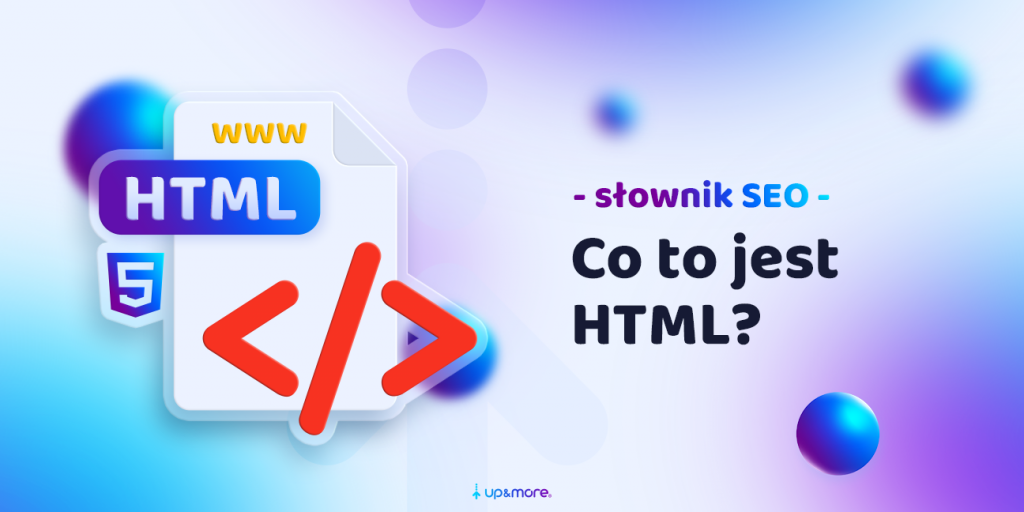Table of contents
HTML (HyperText Markup Language) is a hypertext markup language used to create web pages. The currently used version of HTML is Web3C HTML5. It is used to create hypertext documents and structure information on a page.
In a nutshell, HTML is the primary tool for structuring, presenting and interacting web pages, enabling developers to deliver content and information in an accessible way to search engine users. HTML is a standard markup language that is supported by most modern web browsers, such as Google Chrome.

How does HTML look like?
The basic component of HTML has opening tags such as <h1> and closing tags </h1>. Some tags may have attributes that better describe the type of element. A document-type declaration must be given to create web pages in this language. It must be specified before starting to build a website.
What goes into HTML?
The HTML markup language consists of:
- scripts (e.g. JavaScript),
- data style sheets (e.g. CSS),
- units of measurement of length – to specify width, length, e.g. px or %,
- URI addresses – to refer to other resources from the browser,
- identifiers – are the proper names given to HTML tags for identification.
Example HTML code
Example HTML code that creates a basic page with a header, paragraph and image.
<!DOCTYPE html>
<html>
<head>
<title>Sample page</title>
</head>
<body>
<h1>Welcome to my website - header</h1>
<p>This is a sample paragraph of the test</p>
<img src="image.jpg" alt="Example graphic<
</body>
</html>CSS, JavaScript and HTML
HTML is used to create web pages, but we will not create a good site with HTML code alone. HTML allows us to give some structure to the information on the page, and CSS allows us to format HTML elements to unify the page’s content. CSS (Cascading Style Sheets) are cascading style sheets that we can use to change colours, fonts, margins, backgrounds and other visual properties of HTML elements.
JavaScript is a scripting language that adds interactivity and dynamic features to HTML code. It runs directly in the web browser and allows you to manipulate HTML elements, handle events, interact with the user, send requests to the server and much more. JavaScript can be used to add effects, validate forms, animate, change content on a page and create advanced interactive features.
What can you do in HTML?
Using HTML, you can create the entire structure of web pages. create various elements, such as:
- headings,
- copies,
- lists,
- tables,
- forms,
- images,
- bold text,
- hyperlinks,
- define different text color, etc.
Why is HTML important in SEO?
Correct use and optimization of HTML code in the context of SEO can help improve a site’s visibility in search results, which in turn can increase organic traffic and achieve business goals.
What HTML elements affect SEO?
- The HTML skeleton of a website – the HTML structure of a website allows you to arrange a hierarchy according to which content management on the site is more understandable to search engine robots. Correct code structure contributes to better indexing and display of the page in search results.
- Meta tags – HTML code allows you to add tags such as domain title (meta title) to your website, the correct optimization of which can redirect the user from the search engine to our site.
- Tags and their attributes – among the important elements of HTML for positioning, we can highlight the ALT attribute. Its presence in the image code allows us to index the graphics on the page.
- URL structure – HTML allows you to create SEO-friendly URLs that are understandable to users and search engines.
- Page content (content) – content plays a huge role in web development and SEO. With HTML, high-quality text can appear on the page, with keywords by which customers will find us on the Internet.
Was the article helpful?
Rate our article, it means a lot to us!
Let's talk!
She has been in marketing for 4 years. She feels most confident in the area of SEO and UX. At Up&More, as an SEO Specialist, she is in charge of increasing the visibility of our clients.